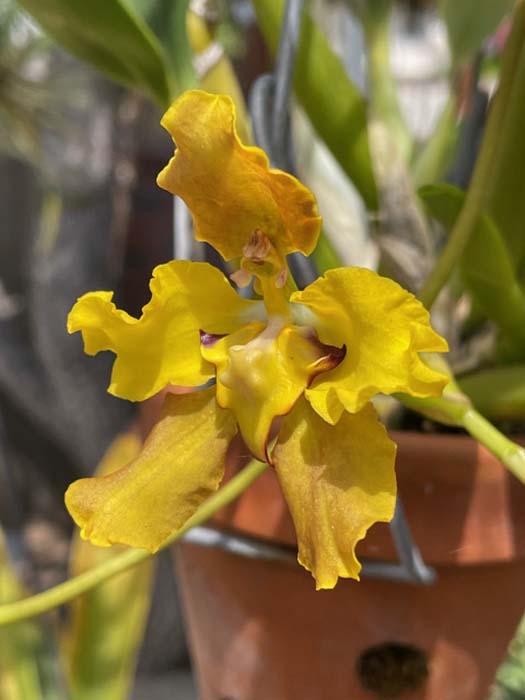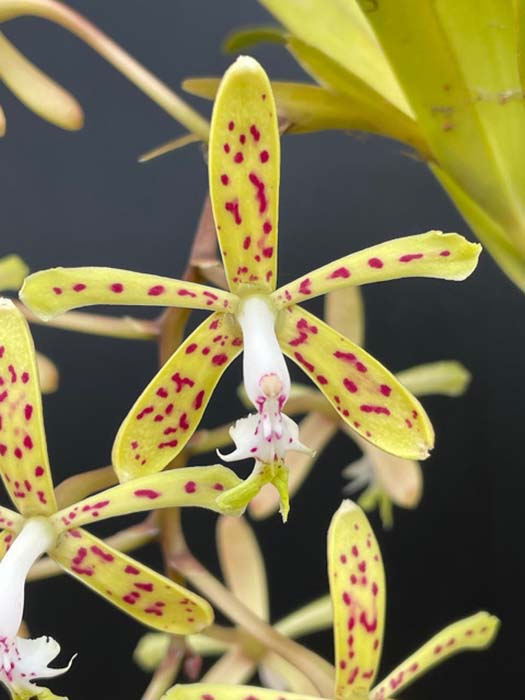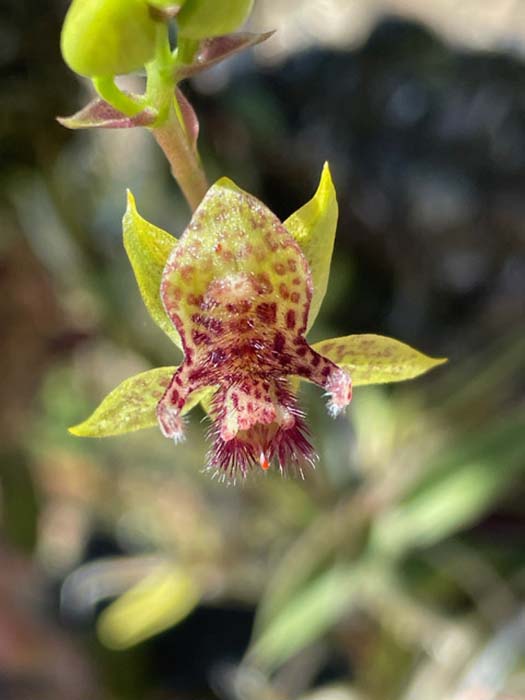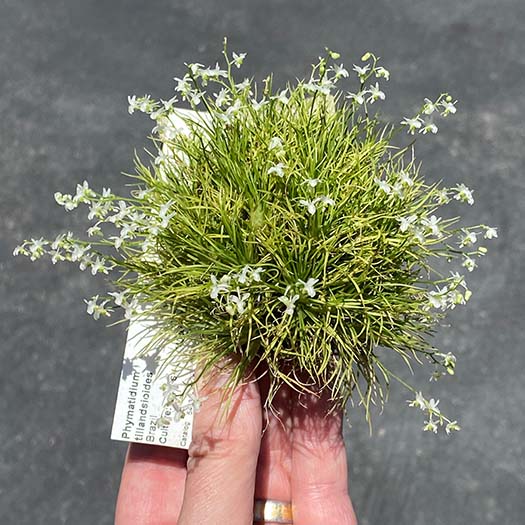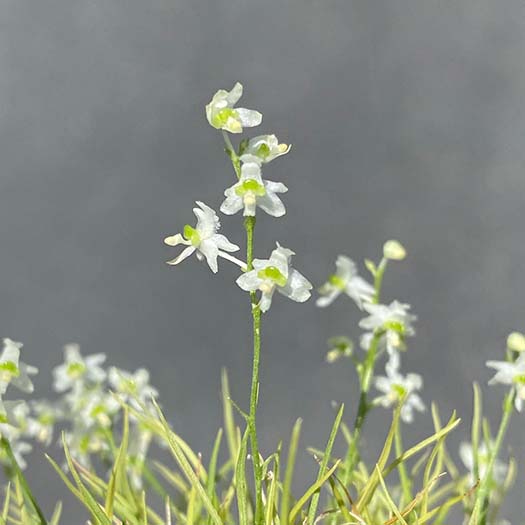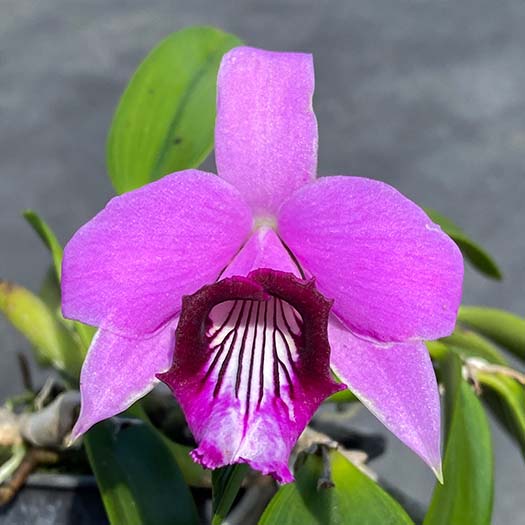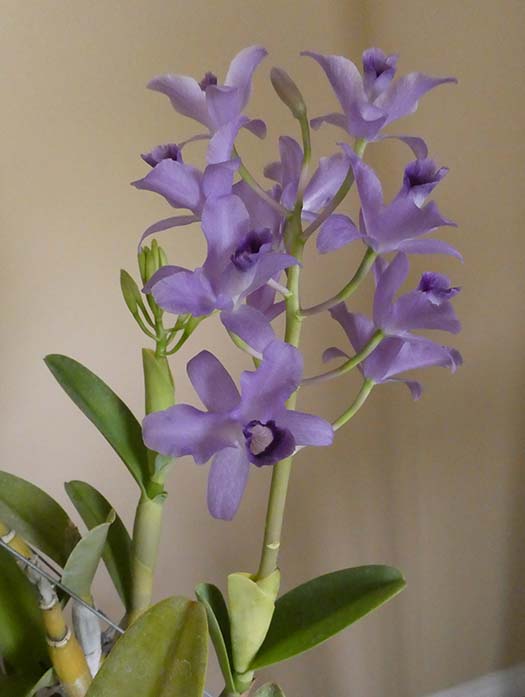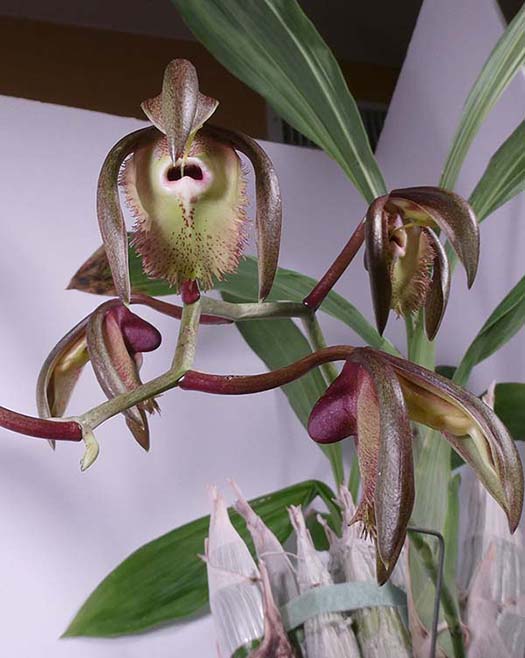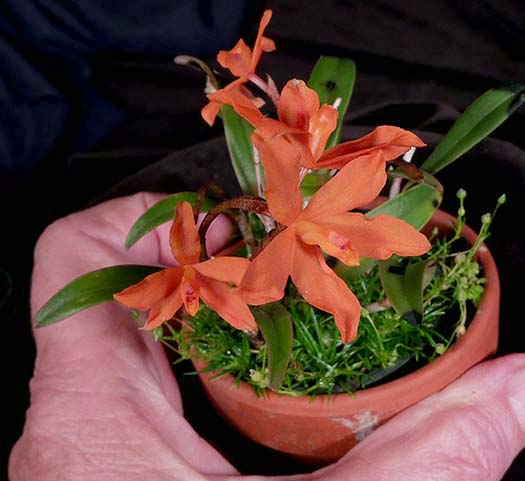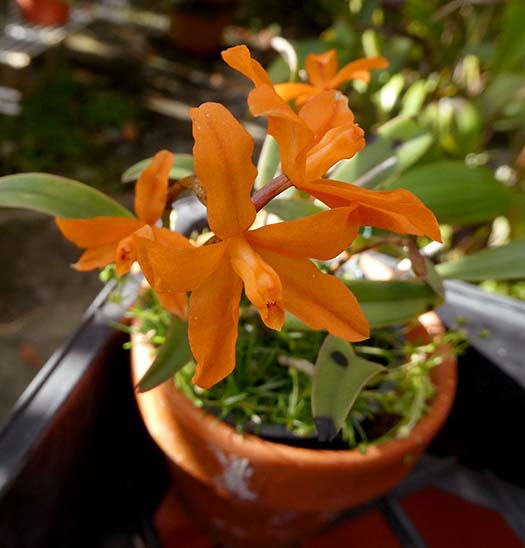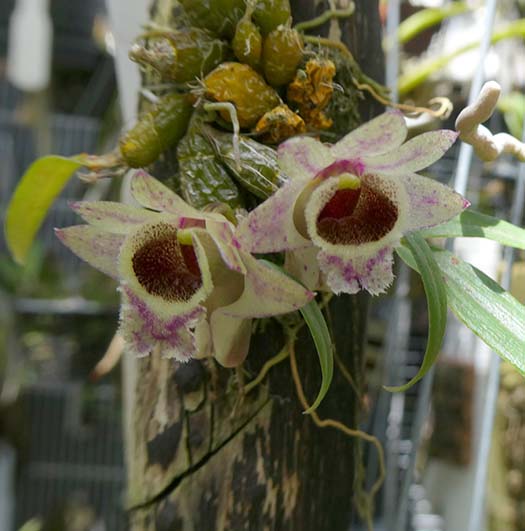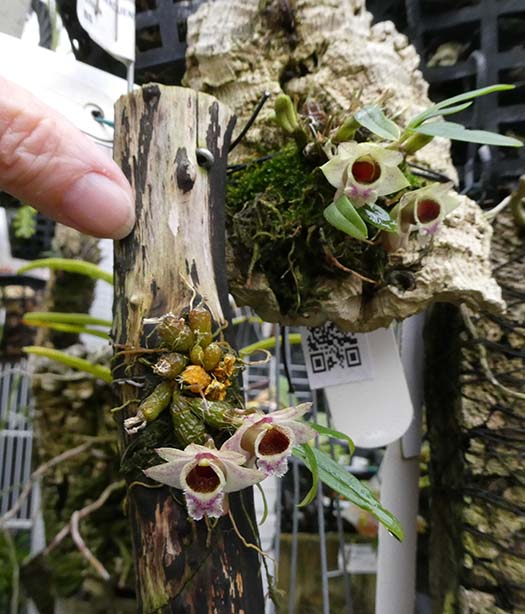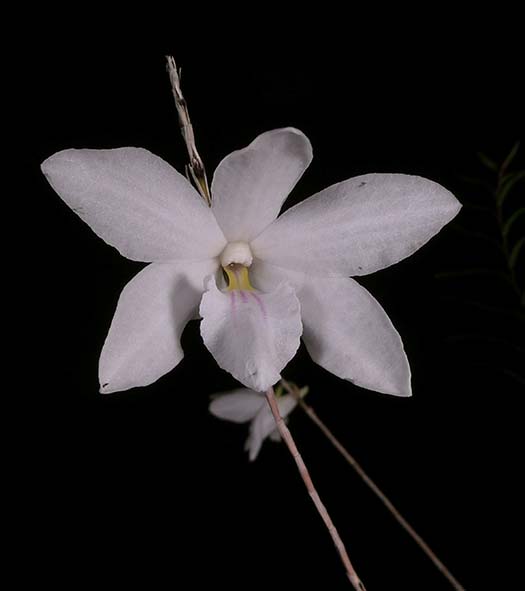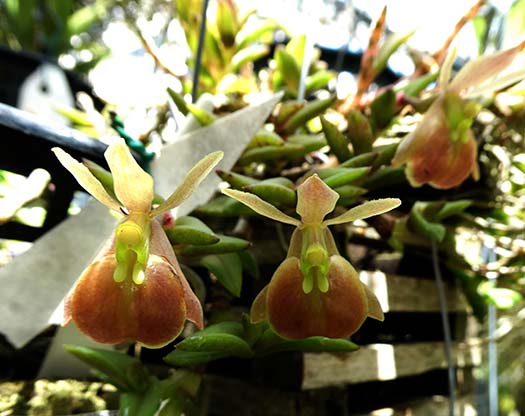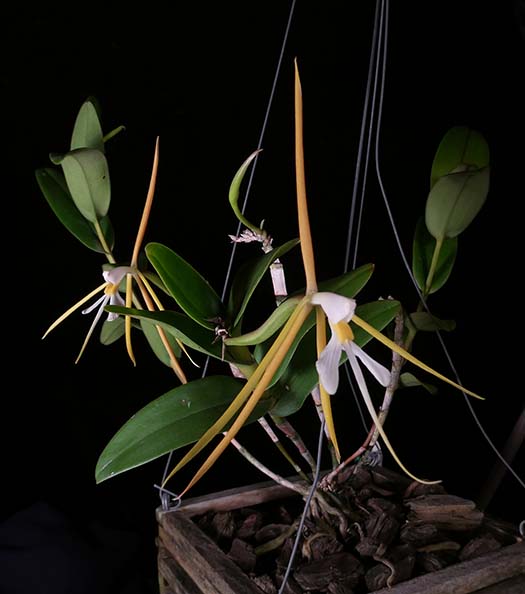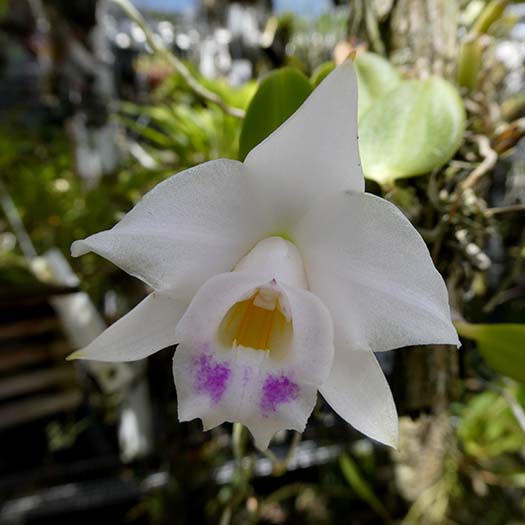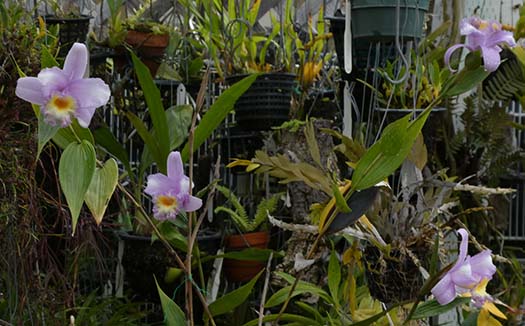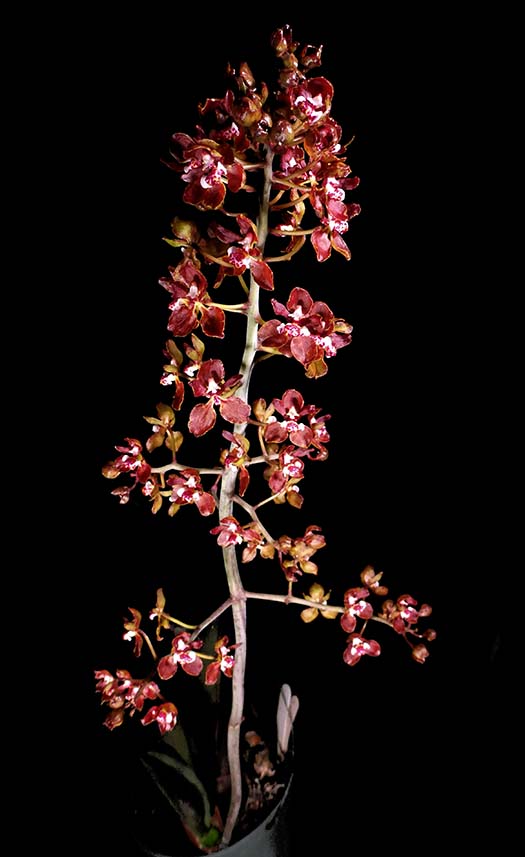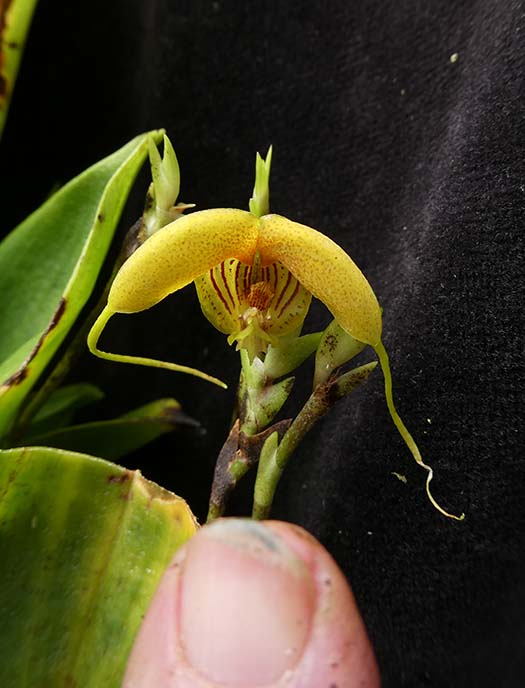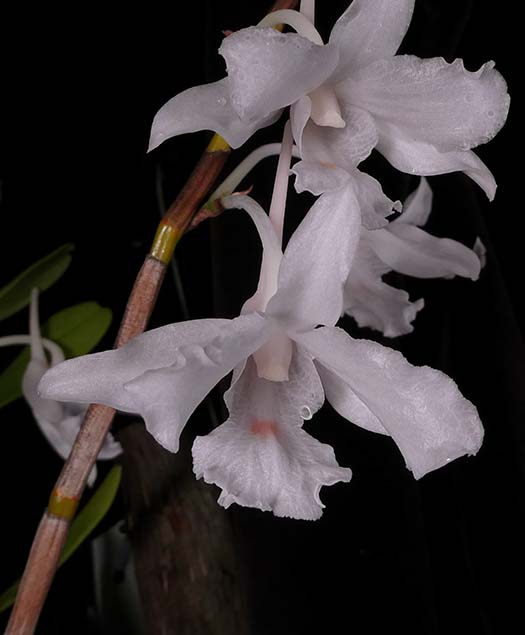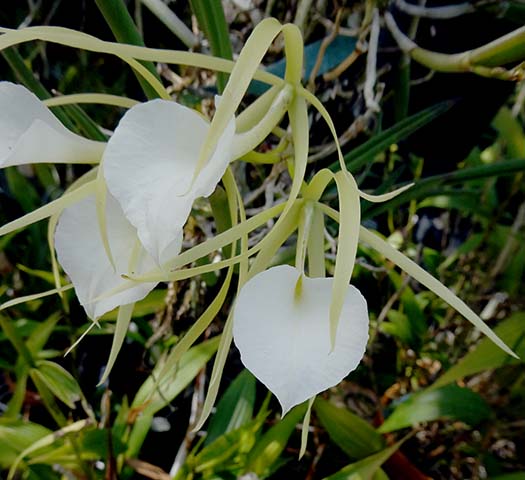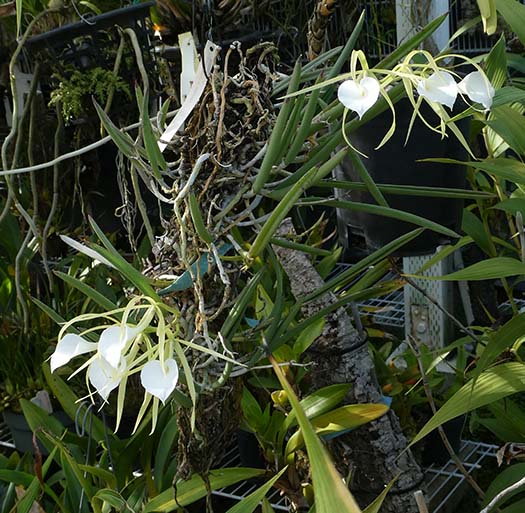September 2022
From Kurt Shanebeck:
|
|
Outdoors coastal, north of Los Angeles: |
|

Dendrobium hekouenseA small deciduous Dendrobium from China with odd flowers. Growing mounted shady and moist. |
|
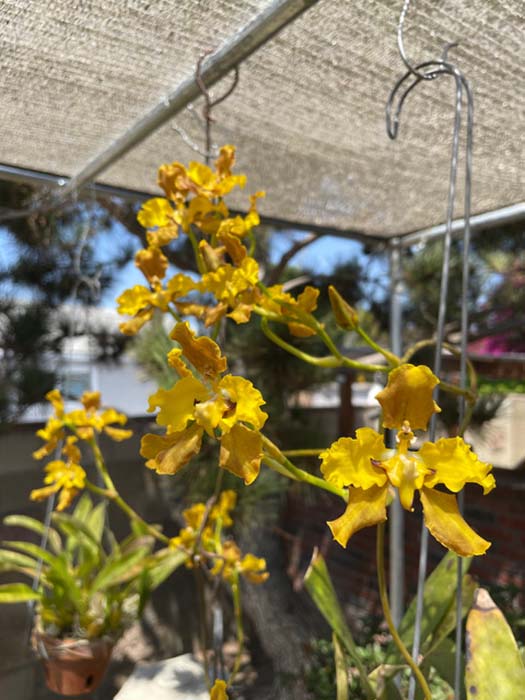 |
|
Cyrtochilum macranthumA large epiphyte from Columbia Peru and Ecuador at elevations to 3000m. Has a long vine like spike. Growing potted in bark under bright light. |
|
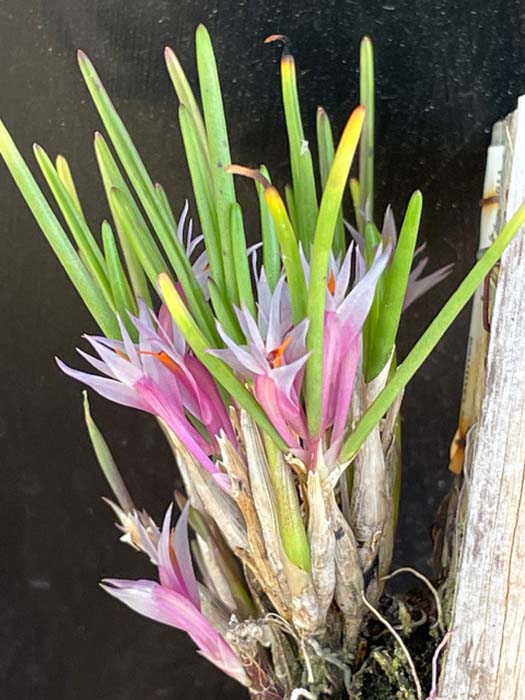
Dendrobium helwigianumNative to New Guinea. A mini with thin upright needle like leaves. Growing mounted with bright light. |
 Prosthechea lividum (syn Encyclia livida)Species from Mexico. Sequential blooms that occur almost continuously. Growing potted with moderate light. |
Epidendrum cristatumA reed stem type Epidendrum that occurs from Mexico to South America. Grows potted and bright. |
|
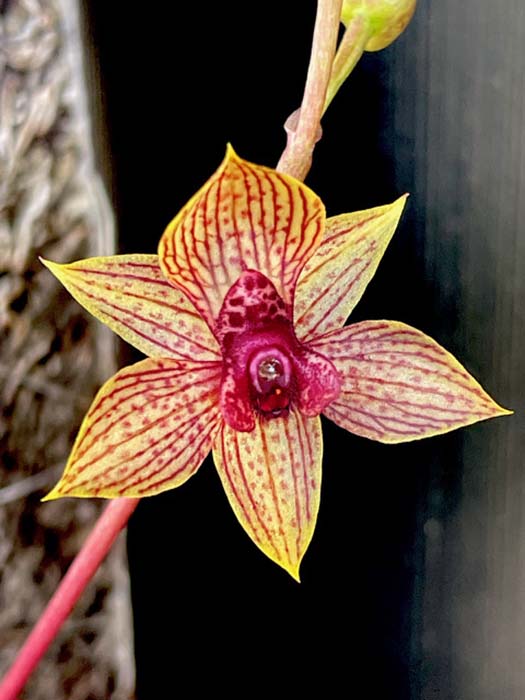
Trichoceros onaensisA South American species. Has thick fleshly leaves and short rhizome. Beautiful sequentially blooming flowers. Mounted on tree fern with moderately bright light. |
|
From Scott McGregor:All orchids grown outdoors, coastal southern California |
|
|
|
Phymatidium tillandsioidesNamed for the plant’s resemblance to Tillandsia, this tiny mini from Brazil has even tinier flowers, but is charming both in and out of bloom. |
|
Laelia dayana v. major (now Cattleya bicalhoi)Great color and deep coloring in lip (v. major) on this mini Cattleya. |
|
From Roberta Fox:
|
|
Outside in the Back Yard: |
|

Cattleya harrisonianaNative to southeastern Brazil, elevations 400-800 m. |
|

Cattleya bicolorThere's a range of color forms, from green to bronze to reddish brown segments. The brilliant lip is distinctive for all. Native to southern and central Brazil. |
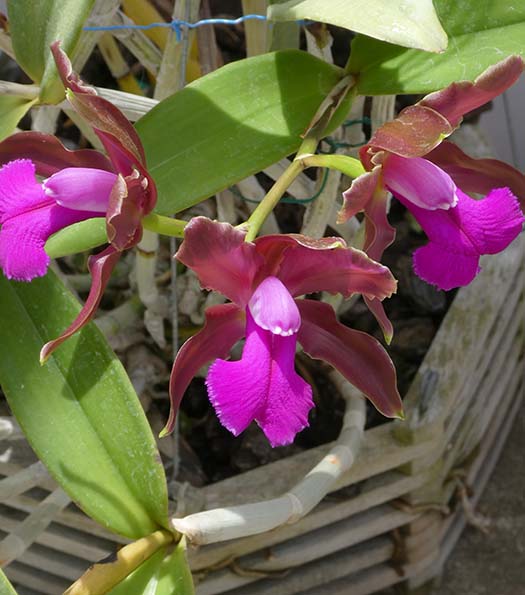 |
Guarianthe (Cattleya) bowringiana f. coeruleaNative to southern Mexico and Central America. The typical form is pink/purple. This color isn't "blue" but a very nice violet. Flowers are smaller than those of the "typical" color form but there are more of them. |
|

Ceratochilus biglandulosusA lovely miniature, flower bigger than the plant and name bigger than both. (Leaves about 3/8" to 1/2", flower about an inch, relatively long-lasting) I don't know that I can take credit for the bloom since it's a relatively recent acquisition though it wasn't in bud when I got it. I got another that I am growing in the greenhouse. Time will tell which environment works better, or maybe it doesn't matter, we'll see. Native to Java at a range of elevations. It has been reclassified as Trichoglottis. Not as much fun. |
 |
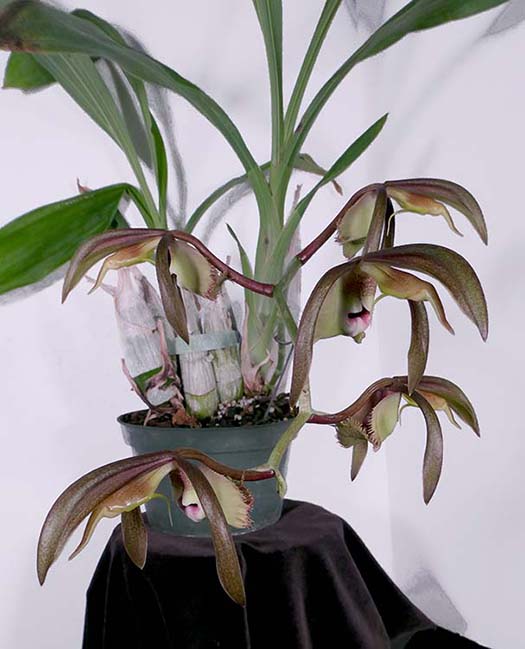 |
|
Catasetum incurvumLike all my Catasetinae, it moves into the greenhouse for the winter - not only for a bit of warmth but to stay dry. However, it spends spring, summer and fall outside. This one took some patience. I got it in February 2016 as a single pseudobulb from Peru. So it had just gone dormant, at a time when the northern hemisphere Catasetinae were close to coming out of dormancy. It sat there through the summer, fall and winter, finally waking up in late spring 2017. So it was dormant for 14-16 months. Then since then, it has grown slowly, producing leaves closer and closer to normal time and getting bigger. it FINALLY bloomed for me. A weird-looking flower with an interesting lip. And certainly an exercise in patience. Most orchids are quicker to acclimate to the seasons when they switch hemispheres, but extremely seasonal ones like Catasetinae clearly can be much, much slower to adjust. |
|
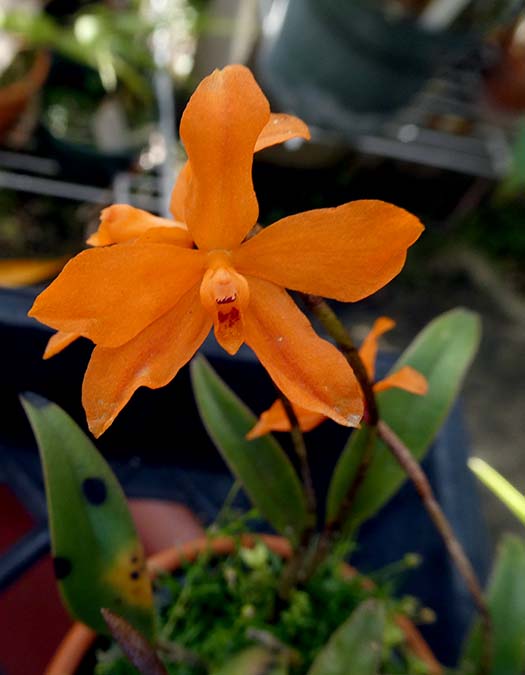
Neocogniauxia monophylla(Pronounced Neo-coney-o-eea) This miniature plant has been a taxonomic puzzle. For years, it was considered a member of the Cattleya tribe (Laeliinae) The flowers certainly look like a slightly wonky mini-Catt. However DNA analysis shows that it is actually closely related to the Pleurothallidinae. Leaves are fairly stiff, as you'd expect of Cattleya relatives, but it doesn't seem to have any pseudobulbs that I can see, that's more like a Pleurothallid. The cladeograms in an interesting paper show the relationsips dramatically. The genus has only two species, clearly an outlier in the taxonomic scheme. It is native to the Blue Mountains of Jamaica. |
|
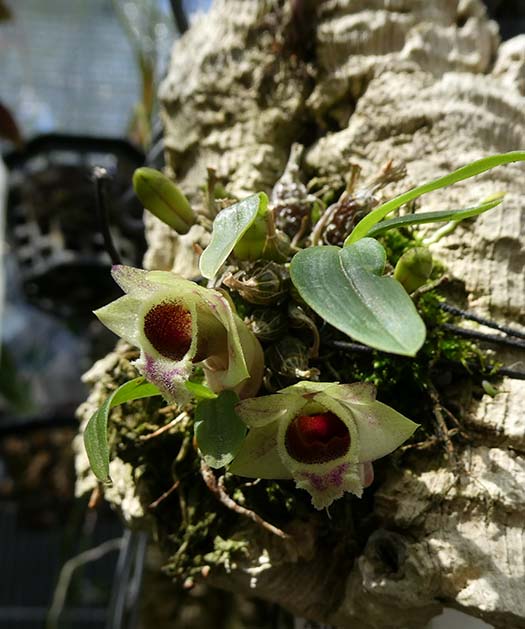
Dendobium hekouenseA charming miniature, from Yunnan, China at elevations of 1000-2000 m. I show two cultivars, to illustrate the variation in color within the speces. It is mostly deciduous, but I don't particularly dry it out - being mounted, it dries quickly after watering. Watering in winter doesn't seem to have any ill effects.
|
|
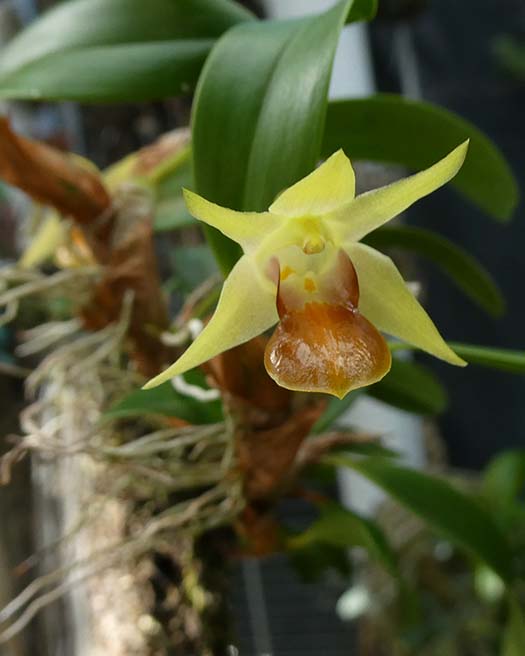
Epigeneium nakaharaeThe genus has been lumped into Dendrobium, but the growth habit is different. All of my Epigeneiums seem to do best with roots in the air, they seem to hate being confined even in a basket. This one is mounted on a hapu'u slab but all of the growth is off the slab. Flowers are almost waxy. It can bloom more than once a year. Native to Taiwan, possibly also Thailand and Vietnam. |
|
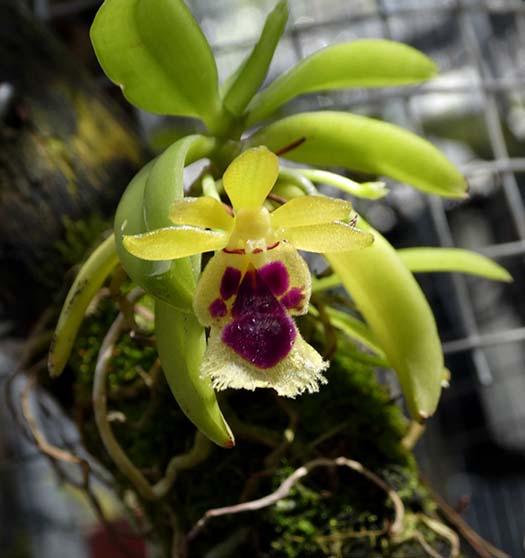
Haraella retrocalla(Now Gomesa) This miniature is native to a wide range of elevations in Taiwan. Mine laughs at winter cold. It blooms several times a year, and each inflorescence produces 2 or 3 flowers in succession. During the warm part of the day, it's quite fragrant - big fragrance for little plant. I grow it fairly shady. |
|
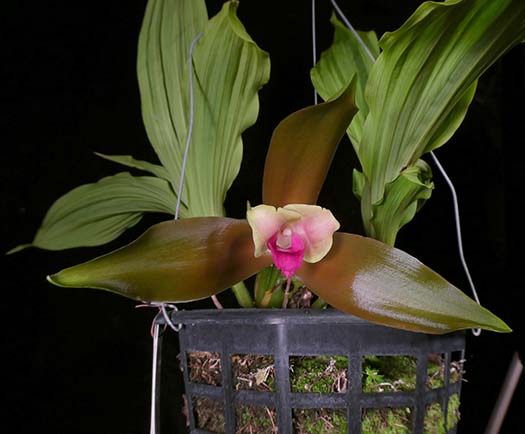
Lycaste schillerianaNative to Panama and Colombia. Flowers have heavy substance. The amount of pink in the petals and lip can vary a lot from one blooming to the next. Somtimes there is just a patch of red in the center of the lip. This is one shows some of the most intense coloration that I have seen. |
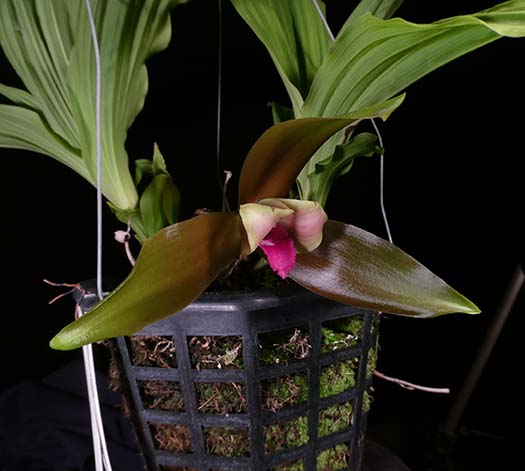 |
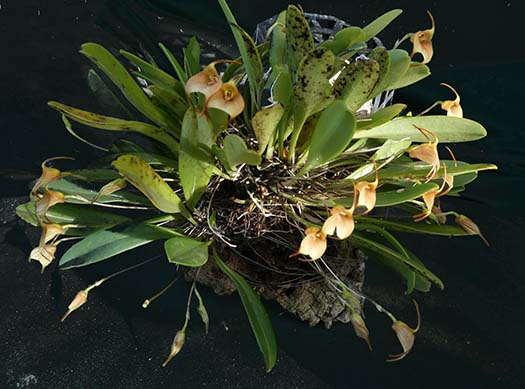
Masdevallia floribundaColor isn't dramatic, but there are LOTS of flowers. This is a rather warmth-tolerant species, so it grows well in areas that are too warm for most Masdevallias. |
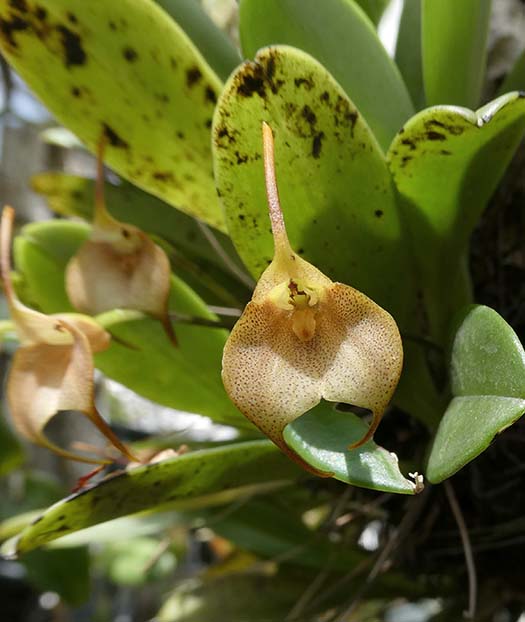 |
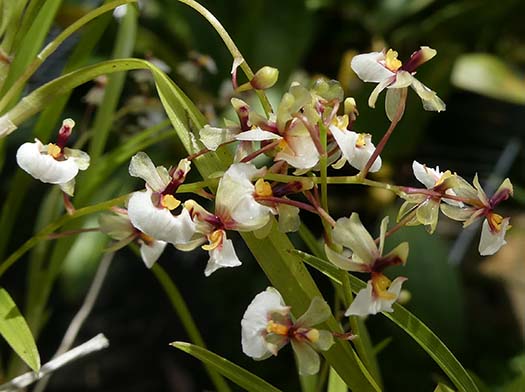 Ornithophora (Sigmatostalix, Gomesa) radicansThe genus name "Ornithophora" means "Bird-bearer" and of the various names, is certainly descriptive. Lots of these little flowers on a plant mounted on bare cork, that blooms reliably every year. |
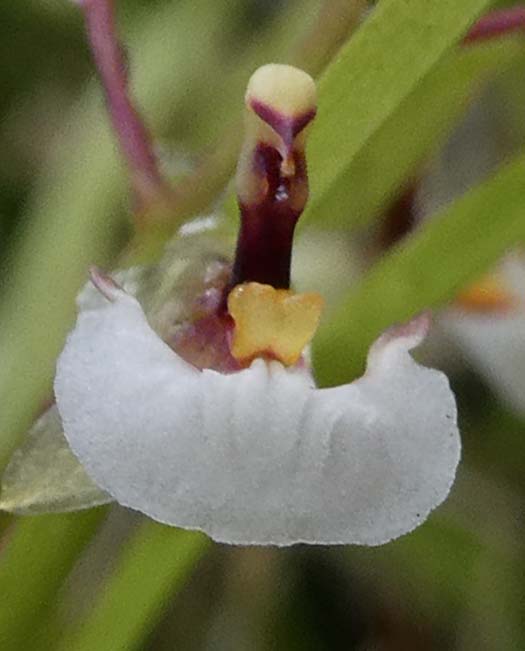 |
Physosiphon inaequisepalus (Stelis declivis)Teensy flowers, but a lot of them. Lots of keikis makes ths one easy to share. Native to Ecuador and Peru, elevation around 3000 m. This was an SBOE$7.50 special. Cute. |
|
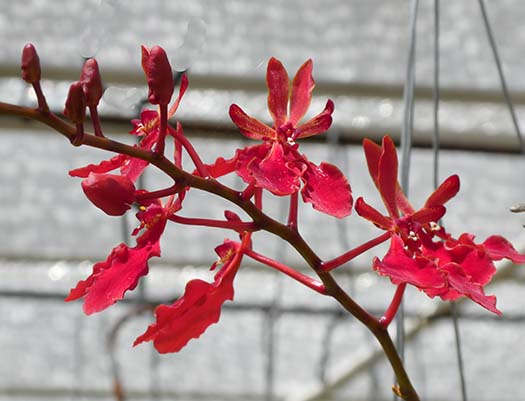
Renanthera imschootianaThese brilliant flowers say "It's summer!". Native to east Himalaya and northern India, the plant is very cold-tolerant. Most ot the roots hang freely in the air. It started out in a basket with sphagnum but most of the roots have escaped after a few years. |
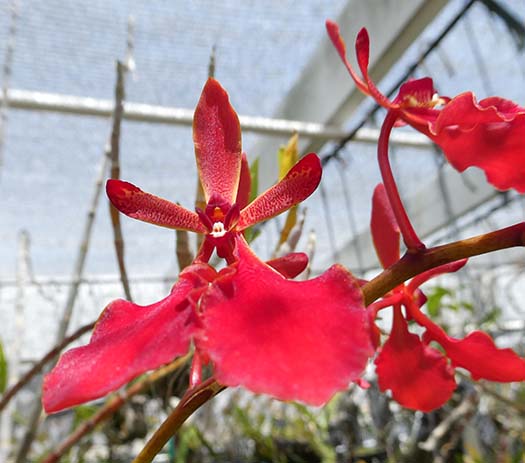 |
Sobralia violaceaI find this to be one of the most beautiful of the Sobralias. Flowers don't last much more than a day, but new ones appear every couple of days and it is blooming on multiple growths. The older growths are significantly taller than I am, there are are more growing so this plant's future is bright. |
|

Thunia albaThis deciduous terrestrial grows in the east Himalaya, northern India, Yunnan, China and across southeast Asia at elevations from around 1000-2300 m. I don't stop watering it when it's dormant and it doesn't seem to matter. The flowers nod, facing downward, so it is necessary to get under them or tip the plant backward to see the beautiful detail. |
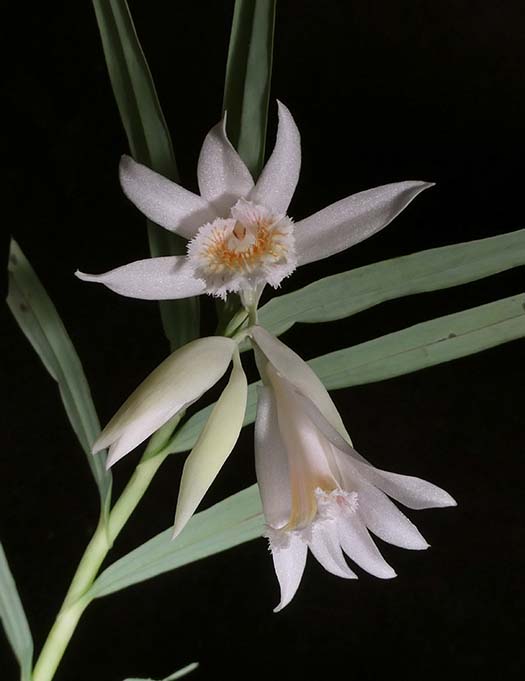 |
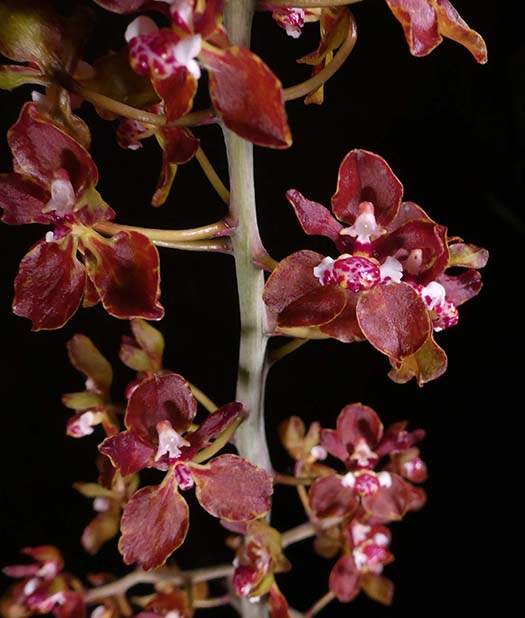 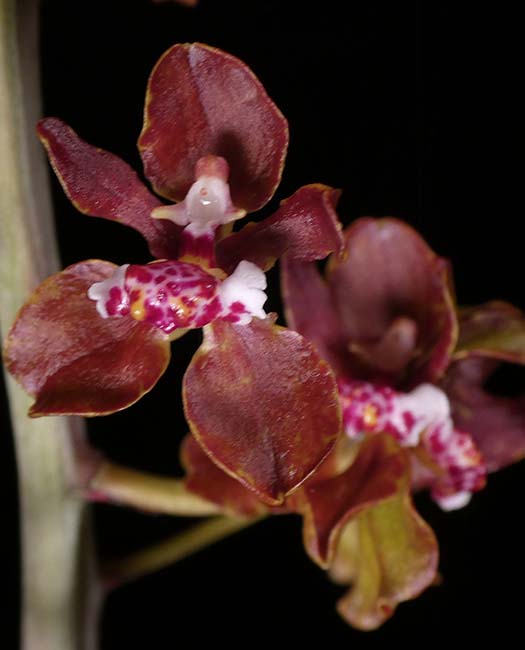 |
|
In the greenhouse... |
|

Bulbophylum frostiiI have been growing this in the greenhouse, but I think that it can grow cooler and have moved it outside. I'll watch it carefully for signs of distress as the weather gets colder, but anything that CAN grow outside WILL grow outside. |
 |
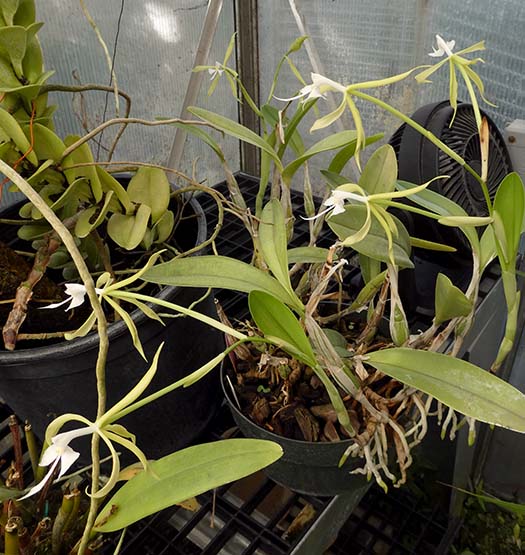
Epidendrum oerstediiCentral America, lower elevations. Very vigorous, tends to want to climb out of the wide bulb pan. May have to try this one outside... |
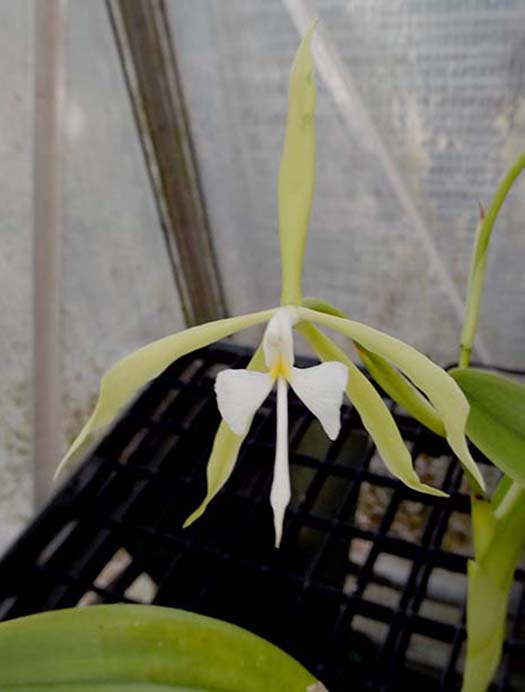 |
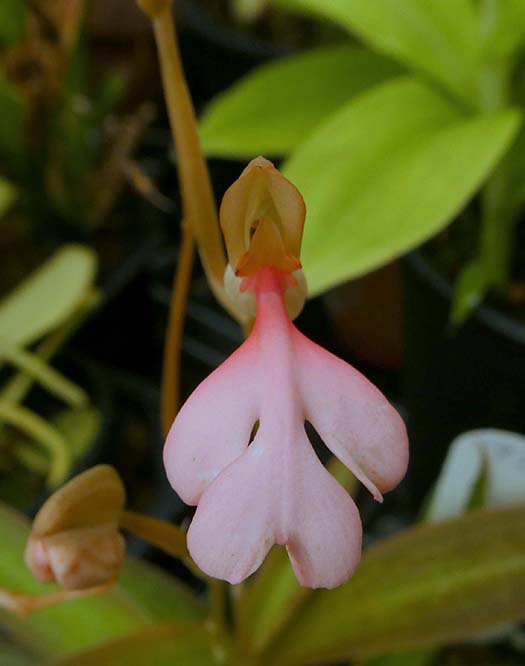 |
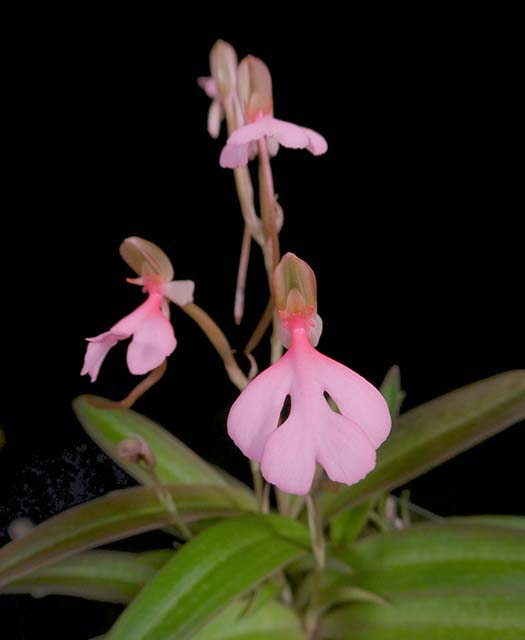 |
Habaneria erichmichaelii (syn. rhodocheila)Kew thinks they're synonyms. Eric Christensen considered them different species. The leaves have beautiful bronze markings. When hese go dormant in winter, I water them very lightly. In about April I start watering more heavily, and new growth starts shortly thereafter. |
|
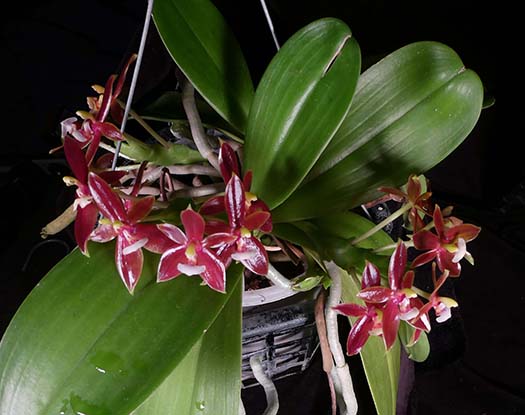
Phalaenopsis cornu-cerviThe inflorescences bloom sequentially for several years. As flowers drop, they acquire a distinctive scalloped appearance. There are multiple color forms of this species, from yellow to striped to this enitnse red. Flowers have heavy substance. It blooms on and off all year. This was a particularly nice flush bloom. |
 |
 |
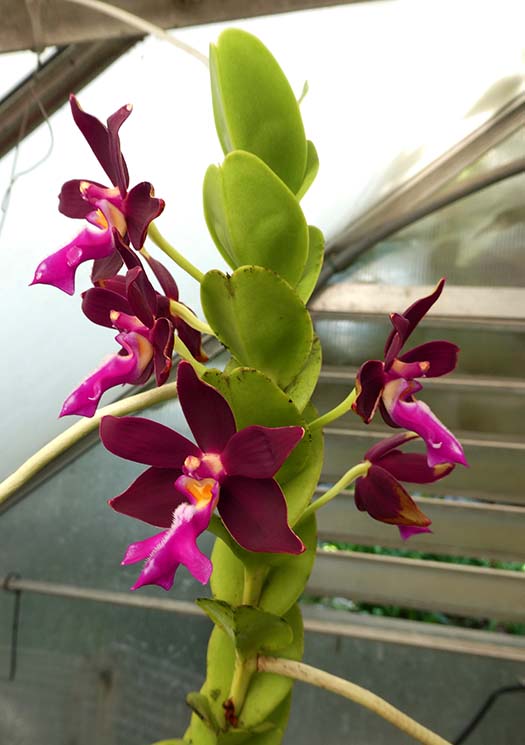 |
Trichoglottis atropurpurea (syn. Trichoglottis brachiata var. philippinense)From the Philippines, of course. The plant produces branches as it grows, and grows copious aerial roots. It is easilly divided. To establish a division, it can be placed on a hapu'u slab or tied to a stake, and some of the lower roots should be placed in a pot in coarse bark. Once established, the part in the pot tends to die off, but by that time the plant is growing rapidly and doesn't seem to care. It needs humidity, and the aerial roots should be well-watered. The reward for fussing with it is this flush of velvety dark burgundy flowers with fluorescent pink lips crowned with a fuzzy tuft. |
|



